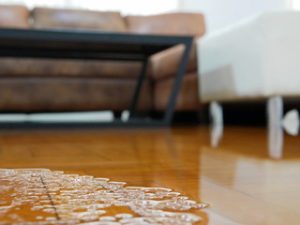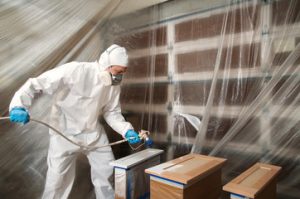Piano Movers Denver have honed methods for quick and safe relocations. They also typically offer insurance options, which can protect your investment in the event of an accident or damage.

Often, larger pianos need to be partially disassembled to fit through narrow hallways or stairs. This can include removing the legs, pedals, or music stand.
Because of their weight and delicate nature, pianos require expert handling during a move. Even a small jolt during transport can damage internal components like keys, strings, hammers, and pedals. Hiring professional piano movers is the best way to protect your investment and ensure its safe arrival at its new home.
Piano movers offer much more than muscle, bringing years of experience and specialized knowledge of the instrument to each relocation. Before the move begins, they’ll assess the situation and prepare a plan to safely navigate obstacles such as narrow doorways, stairs, or turns. This attention to detail drastically reduces the risk of damage and saves time by eliminating the need for unnecessary trips back and forth.
Moreover, hiring professional piano movers eliminates the need for you to rely on friends or family members to assist with the move. This helps avoid injuries to your loved ones and ensures that your valuable is handled with the care it deserves. Back strains and other physical injuries are common when trying to lift heavy objects, and a piano is no exception. Moreover, the instrument’s awkward shape can cause injury if improperly handled.
Professional movers also have the necessary tools to handle your piano with care. They use straps and soft padding to secure the instrument, minimizing the risk of accidental damage during transportation. Additionally, they have specialized dollies and ramps specifically designed for moving pianos to allow them to maneuver the instrument around tight corners and uneven surfaces.
Another crucial benefit of using professional piano movers is that they’re insured. This provides a peace of mind for you as a homeowner knowing that the event of any damages is covered. In the event of any accidents, insurance companies will cover the cost of repair or replacement to ensure your piano is returned to its original state.
When choosing a piano moving company, be sure to compare quotes carefully and look at the fine print. You should make sure that all potential additional fees are disclosed, as these can add up to a substantial amount. Also, make sure to check out customer testimonials to see how well the company has performed in the past. You should always aim to find a company that has a proven track record and is dedicated to providing quality service.
Save Time
Pianos are beautiful pieces of furniture that add beauty to any home. But despite their elegance, these instruments are incredibly heavy and difficult to maneuver. Moving one can be time-consuming, frustrating and if not done properly, damage a piano or other household items. By hiring professional piano movers, you can save yourself a lot of time, stress and money.
Piano movers are specially trained to handle the unique challenges of moving a piano. They know how to move these large, awkwardly shaped objects without damaging walls, doors or floors. Using special equipment such as piano dollies, straps and padded moving blankets, they can ensure your piano is safely transported from point A to point B without any damage.
In addition to the specialized tools and equipment, piano movers have the experience and expertise to complete the job quickly and efficiently. Hiring experienced movers to take care of the entire relocation process also means you can focus on other tasks and minimize your stress.
Aside from the physical effort involved, it’s also important to prepare your home for the arrival of the piano movers. Ensure the path from the entrance to your piano is clear of any obstacles such as rugs or furniture. It is also helpful to measure doorways, hallways and staircases to ensure the piano will fit. This will prevent any last-minute surprises and help the movers plan accordingly.
It is recommended that you have at least four strong and capable individuals to assist with your move. These individuals should be able to lift more than 200 pounds each. They should also be in good health and have the ability to move quickly and with precision. This will help reduce the risk of injuries and will speed up the entire relocation process.
In addition, it’s a good idea to have a plan for the order of transport and the placement of the piano in its new location. This will ensure that the piano is placed in the correct place within your home and that all the necessary steps are taken to prepare it for the move. It will also help you avoid costly mistakes such as placing the piano in a corner or against a wall.
Avoid Damage
Pianos are a large instrument that can easily damage walls, doors, and stairways during transport. Professional movers assess the situation and use methods like padded skid boards, ramps, dollies, and hoisting straps to ensure that your property remains unharmed. They also take into account the dimensions of your home and its layout to predict any challenges that may arise during the move. This planning allows them to maneuver the instrument with precision and speed, allowing you to adhere to your moving schedule without delays.
Despite their bulky size, pianos have delicate internal structures. Improper handling can cause serious damage, from shaky strings and hammers to cracked soundboards, which affect the instrument’s playability. Additionally, the polished exterior is prone to scratches and dents, causing significant aesthetic harm. Moreover, an improper move can result in injuries to the movers and bystanders alike, which has legal consequences.
Professional piano movers are trained to maneuver the instrument through tight spaces and awkward angles with ease. They use specialized tools to prevent damage, including piano dollies and special padding systems that protect both the piano and your property. They also have a variety of trucks suitable for transporting the instrument, which saves you time and effort from having to rent a vehicle.
Additionally, many piano movers have insurance coverage to protect you in the unlikely event of damage during transportation. This adds a layer of security and transparency that reassures you they are committed to professionalism and accountability.
Choosing the right piano mover is a critical decision that can make or break your moving experience. Avoid rogue movers with no training, equipment, or accountability by opting for fully insured professionals with a solid track record. With their specialized knowledge, experience, and equipment, they can keep your precious investment safe from start to finish. Their services will be worth the extra expense, ensuring your move is seamless and stress-free. They’ll even save you time by expediting the process so that you can enjoy your new home or office sooner.
Avoid Injury
It is important to remember that pianos are very large and very heavy. This means they are at a high risk for injury when moved improperly. Damage to the piano’s internal mechanisms or its strings could mean costly repairs. Injuries to movers themselves could also be costly if they lose pay due to the injury or require time off of work.
Hiring piano movers is an excellent way to avoid these risks. Professional movers have the tools and knowledge to move pianos safely. This saves the movers from injury, protects their health, and ensures that the piano is secure during transport.
Even if you are physically able to move a piano, it is still not a good idea to try and do it alone. Moving a piano requires a team of people to properly lift and maneuver it. When a piano is lifted incorrectly, it can shift and cause an imbalance, which increases the risk of injury for the movers. It is important to have enough hands on deck and to communicate clearly with your team to prevent accidents.
Another issue that can arise when moving a piano is that the instrument is very top-heavy, meaning it has a tendency to fall over. This can be very dangerous for the movers and can damage the piano as well as the surrounding surfaces. Piano movers are aware of this issue and take steps to prevent it by using special tools to distribute the weight evenly.
When transporting a piano, it is essential to wrap it securely in blankets to protect the finish. Additionally, the legs and pedals should be removed and wrapped separately so that they are not exposed to stress or friction during transit. This will protect the integrity of the piano and make it easier to reassemble at its final destination. Lastly, it is important to load the piano in a truck carefully to ensure that it is not crushed or damaged during transport.
Whether you are moving an upright or grand piano, it is important to hire professionals to handle the task. It is not worth the cost of medical bills, lost wages, or damages to your home or the piano if you get injured during the move.








